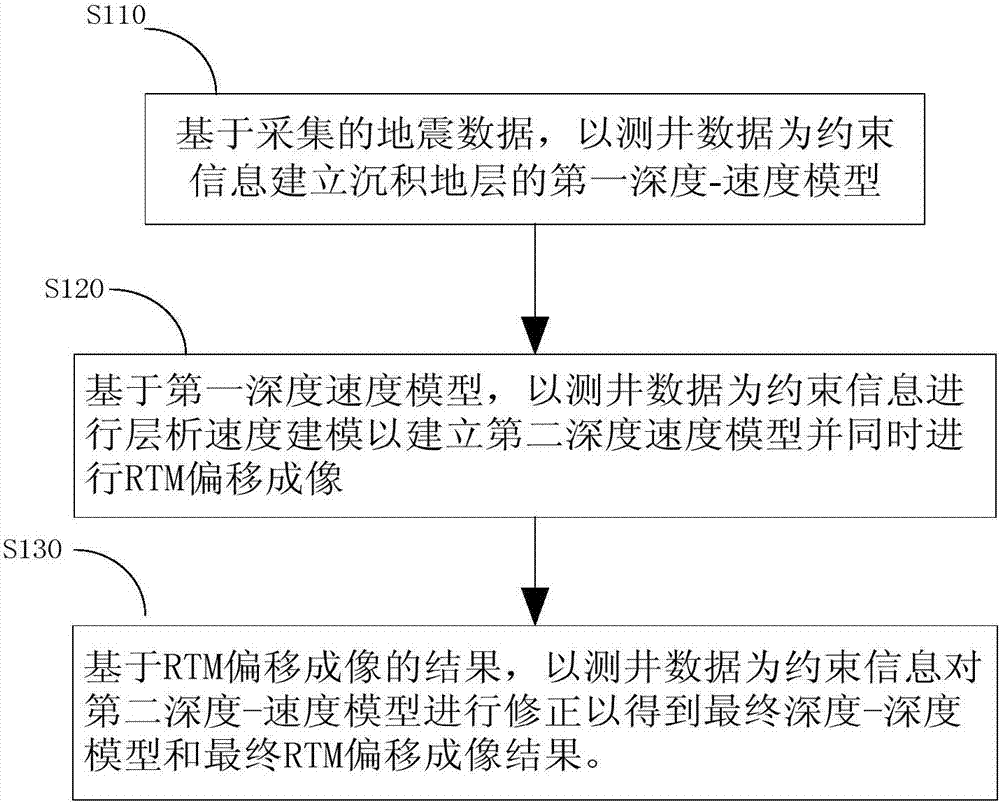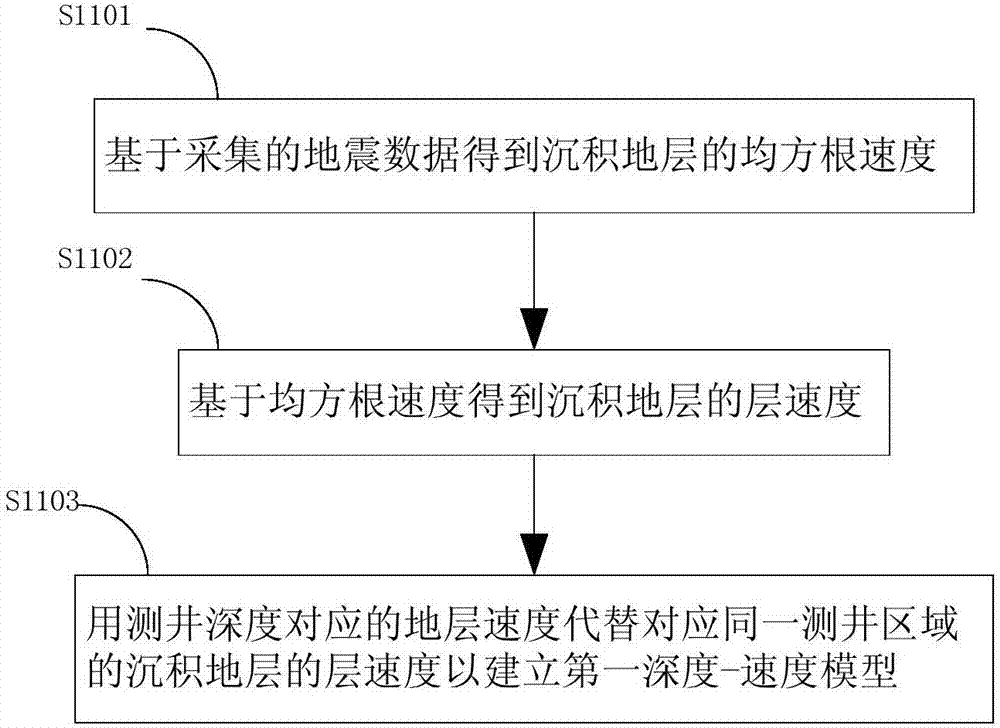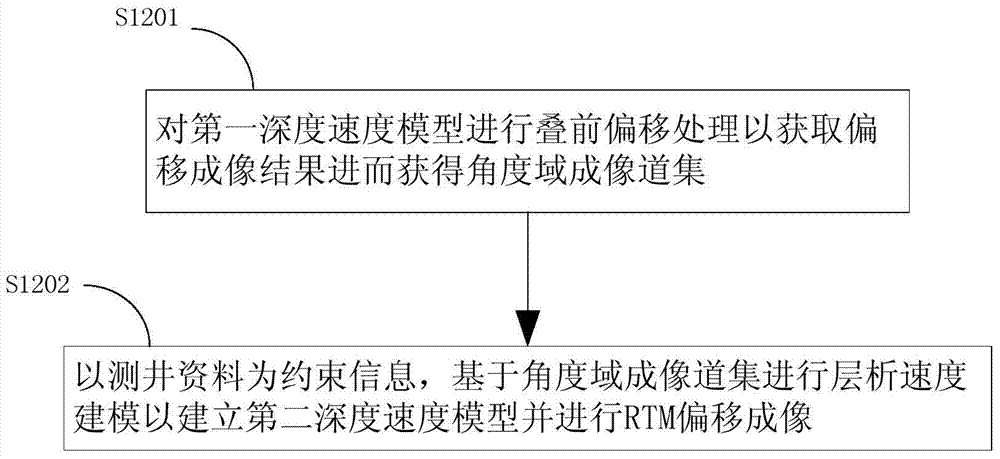A Velocity Modeling Method Based on RTM Imaging
A velocity modeling and velocity model technology, applied in the field of geophysical exploration, can solve the problems that the velocity model cannot be effectively added to the prior information of well logging data, and the velocity model establishment process is difficult to control, so as to improve the imaging quality and accuracy
- Summary
- Abstract
- Description
- Claims
- Application Information
AI Technical Summary
Problems solved by technology
Method used
Image
Examples
no. 1 example
[0045] figure 1 is a method flow chart according to an embodiment of the present invention, refer to below figure 1 Each step of the present invention will be described in detail.
[0046] In step S110, the seismic data of the underground sedimentary stratum is obtained by seismic exploration technology, the logging data of the sedimentary stratum is obtained by well logging technology, and the first depth-velocity model of the sedimentary stratum is established with the logging data as constraint information.
[0047] The logging data here includes the logging depth obtained by the acoustic logging technology and the formation velocity corresponding to each logging depth. This step can be further divided into figure 2 The following steps are shown.
[0048] In step S1101, velocity analysis is performed on the acquired seismic data to obtain the root mean square velocity of the sedimentary formation. The root mean square velocity is used to characterize the overall veloci...
no. 2 example
[0060] like Figure 5 , Image 6 , Figure 7 and Figure 8 What is shown is to use a specific embodiment of the present invention to illustrate the effect of applying the method described in the present invention.
[0061] like Figure 5 Shown is a schematic diagram of the logging constraint data and the initial layer velocity field, the horizontal axis represents the position of the common center point, and the vertical axis represents the formation depth. As shown in the figure, in some areas inside the sedimentary formation, the layer velocity of the formation in this area can be obtained through logging technology. The formations are divided into different blocks according to different formation velocities, and the formations corresponding to different formation velocities are shown in different gray levels in the figure, where different gray levels only indicate that the formation velocities between adjacent formations are different, not It specifically indicates the...
PUM
 Login to View More
Login to View More Abstract
Description
Claims
Application Information
 Login to View More
Login to View More - R&D
- Intellectual Property
- Life Sciences
- Materials
- Tech Scout
- Unparalleled Data Quality
- Higher Quality Content
- 60% Fewer Hallucinations
Browse by: Latest US Patents, China's latest patents, Technical Efficacy Thesaurus, Application Domain, Technology Topic, Popular Technical Reports.
© 2025 PatSnap. All rights reserved.Legal|Privacy policy|Modern Slavery Act Transparency Statement|Sitemap|About US| Contact US: help@patsnap.com



